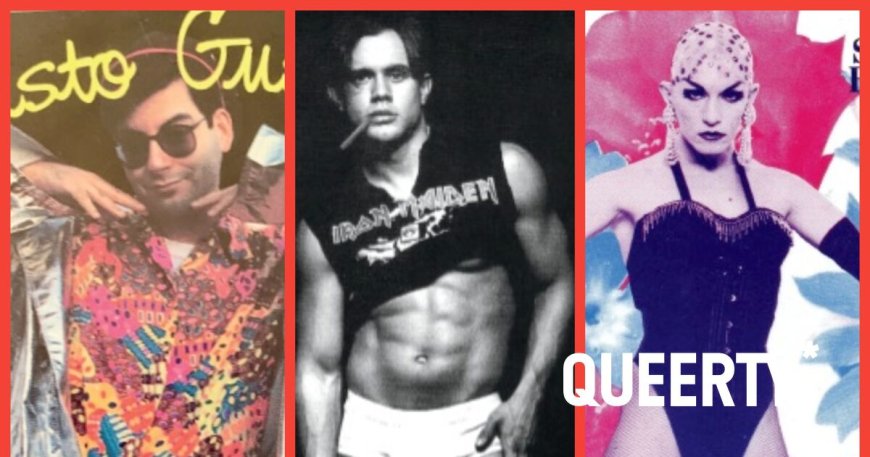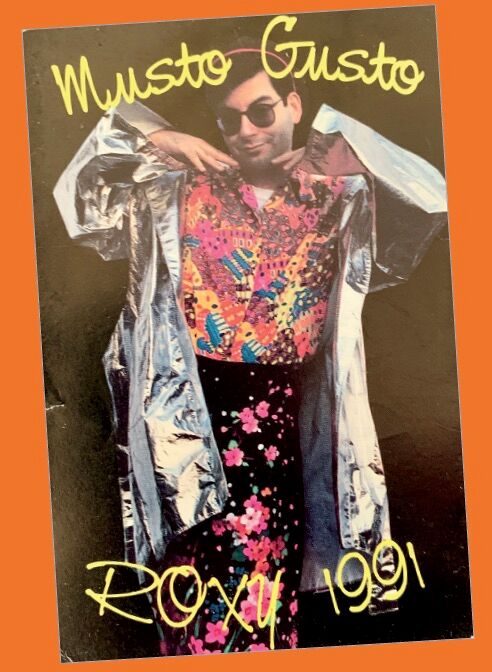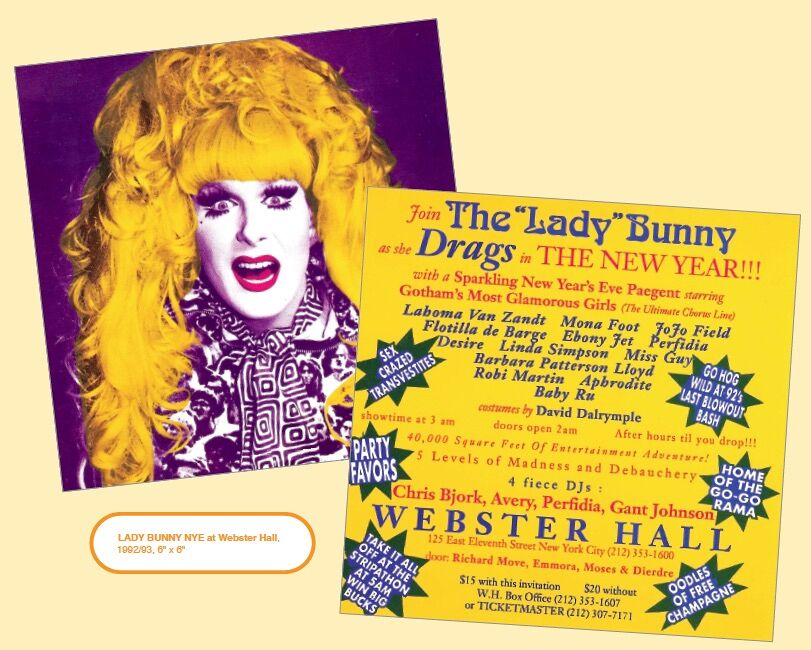PHOTOS: Step back in time to New York’s queer club scene of the 1990s
The following is an excerpt from "GETTING IN: NYC Club Flyers from the Gay 1990s" by David Kennerley with a foreword by Michael Musto

The following is an excerpt from GETTING IN: NYC Club Flyers from the Gay 1990s by David Kennerley with a foreword by Michael Musto, available now from Daken Press. The coffee table book features over 230 eye-popping images of club flyers, as well as interviews with drag queens, club kids, DJs, and celebs from the era. Order your copy at GettingInClubBook.com.

Back in the 1990s, massive venues like the Roxy, Tunnel, Limelight, and Palladium attracted a diverse, crazy quilt of drag queens, Club Kids, lesbians, trans people, Chelsea Boys, adventurous straights –– and even bi-curious types like me. We were a glorious, throbbing confederacy of misfits.
I may not have been a look-at-me Club Kid or chiseled Chelsea Boy, but I found my groove. The pulsating, gospel-tinged house music nourished my soul. I danced to the beats of Larry Tee and Junior Vasquez and Victor Calderone, commingled with sweaty strangers on the dance floor, and explored the back rooms. It was a visceral, transformative experience.
And when it was time to leave, promoters handed out flyers for the next week. The stairs outside the Roxy were carpeted with them. The trash cans on street corners overflowed with them. You’d hop into a taxi at 4 a.m. and find discarded flyers on the floor. I always hung on to mine. For me, these flyers represent a souvenir of a night well-lived. A snapshot of a magical realm that provided escape, love, and a sense of belonging. I had been reluctant to come out, but these clubs helped me not only accept my sexuality but celebrate it, joining a vibrant, defiant community. By the end of the decade, I had collected over 1,200 club flyers.
Michael Musto, journalist & nightlife guru

Fortunately, clubs at that time offered more than simply a space to have fun. They provided a refuge for an oppressed LGBTQ community, especially during the AIDS crisis. When AIDS first hit in the ’80s, one of the biggest shocks was that no one was helping us or acknowledging it, except our own community or allies like the Broadway community. We had to mobilize, and that extended to the clubs, which promoted education and held fundraisers for certain causes. It was a bit hypocritical, however, because sometimes the clubs held events to promote awareness about safe sex when there was unsafe sex going on right there. That’s part of the wacky contradiction of the gay community.
Ernie Glam, club kid & author

One of my favorite events [at Limelight’s Disco 2000] was the Hot Body Contest that Larry Tee and Lahoma Van Zandt hosted every week. Around 2 a.m., when everybody was good and drunk, they’d encourage people to come on stage to dance and strip. The winner got $100. The most outrageous competition was when this super-hot guy got onstage and started stripping. When he took his pants off, we all realized he was wearing a prosthetic leg, which he then removed, too. The girl competing against him realized she was losing, so she started dry-humping his stump with her crotch. The crowd exploded in laughter and cheers. It was so funny, I’ve never forgotten the absurdity of that moment. Despite her efforts, the guy with the stump won the contest.
Chip Duckett, club promoter

I promoted the gay night at Mars on Sundays called Mars Needs Men. The club was in an old meatpacking plant owned by Rudolf, who insisted on having a gay night from day one. It had five floors plus the roof deck and would draw 3,000 people on a given night. Mars came along at a unique time. I was one of the first gay club promoters coming in after AIDS had decimated places like The Saint. The Saint had skewed older and people thought it was time for a whole new kind of nightclub. Mars was the first megaclub to hold a party geared to gay men in their twenties. Back then, the neighborhood was full of working meatpacking plants. There were dead animals hanging on hooks everywhere and blood was running down the street. The smell was disgusting, and I would come outside and want to throw up. I’m a vegetarian.
Chip Duckett, club promoter

The Copacabana was so much fun. Susanne Bartsch was smart about having that uptown/downtown blend. If everybody’s a clown, then it’s not entertaining. Somebody has to be gaping. She was genius at figuring out that combustive mix of people. It worked back then and it still works today.
Mark Allen, go-go boy, model & activist

People often asked me, “What are you thinking of when you’re dancing up there on the box?” And I always said, “Food.” If you wanted to have flat abs and a slim waist, you couldn’t eat anything for hours. I was starving up there. I was thinking of cheeseburgers from Veselka.
Lady Bunny, drag artist & DJ

The late 1980s and early 1990s was an incredible time for drag performers. We were paid to go to football-stadium-sized clubs like the Roxy, Tunnel, and Palladium just to hang out, meet guys, and hand out free drink tickets. With Amanda Lepore, RuPaul, and Kevin Aviance, it was a different experience back then. Now nightlife is more related to bars. I’m a big girl and my scale is not really suited to a smaller venue. I need room to twirl around.
A lot of us felt that we were part of a scene that was so special that we wanted to make a meaningful contribution. It wasn’t like a lot of today’s drag queens obsessed with getting onto RuPaul’s Drag Race. We actually loved being out in the clubs and we loved being out with each other. There’s a lot to be said for the Drag Race girls. They have beautiful lace front wigs and exquisite makeup and costumes. And they have way more polish than we had back at Wigstock. Actually, they have way more polish than I have now. They all make fun of my makeup.
Order your copy of GETTING IN: NYC Club Flyers from the Gay 1990s by David Kennerley at GettingInClubBook.com.

 Mark
Mark 





